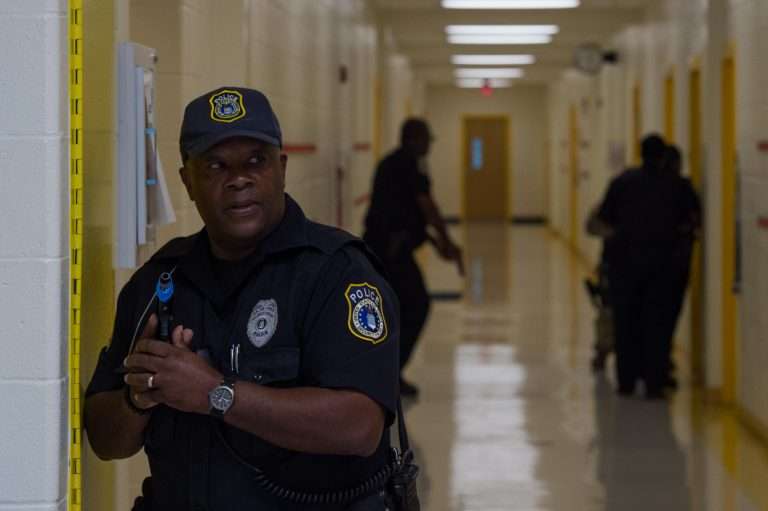If there’s one thing every parent, teacher, and student should feel when they enter a school building, it’s safe. Unfortunately, recent years have shown us that safety can’t be taken for granted. And while we can’t predict every scenario, schools can—and must—prepare, protect, and prevent.
From physical safeguards to emotional well-being, school security is about more than metal detectors and locked doors. It’s about creating an environment where people can learn and work without fear, knowing that systems are in place if something goes wrong.
🚨 Why School Security Is More Important Than Ever

We live in a time where schools are under increasing pressure to address safety concerns—from physical threats like unauthorized intruders to digital risks like data breaches. But the impact of feeling unsafe goes beyond potential incidents. It affects:
-
Student concentration and learning
-
Teacher retention and performance
-
School climate and culture
-
Parent trust and community confidence
When students and staff feel secure, academic success and well-being improve across the board.
🧱 Core Components of an Effective School Security Plan
To truly enhance security, schools need a multi-layered approach that includes both prevention knowledge and response strategies. Here’s what works:
✅ 1. Physical Security Measures
These are the visible systems that control access and prevent unauthorized entry.
-
Single-entry points during the school day
-
Electronic visitor check-in systems with ID verification
-
Exterior cameras and interior surveillance
-
Fencing, signage, and lighting around the perimeter
-
Locking mechanisms on all classrooms and entrances
🔐 Tip: Conduct a quarterly walk-through with your admin and facilities team to spot any vulnerabilities.
✅ 2. Emergency Response Planning
A great plan isn’t helpful unless everyone knows it.
-
Clear emergency procedures for lockdowns, evacuations, shelter-in-place
-
Emergency drills practiced at least twice per semester
-
Easily accessible emergency kits in classrooms and offices
-
Crisis communication protocols for staff and parents
-
Collaboration with local police, fire departments, and EMTs
📋 Make sure substitute teachers also get quick-start emergency guides.
✅ 3. Cybersecurity and Digital Safety
With more devices in students’ hands than ever, schools must protect their networks, data, and users.
-
Strong firewalls and filtered access
-
Multifactor authentication for admin systems
-
Data privacy policies (FERPA compliance)
-
Staff and student training on phishing and password safety
-
Secure backups and data encryption
🖥️ Digital threats are real—build cybersecurity into your school’s safety plan.
✅ 4. Social-Emotional Safety and Mental Health
Emotional security is just as important as physical protection.
-
On-site counselors and social workers
-
Anonymous reporting systems for bullying or threats
-
Conflict resolution programs and restorative practices
-
Mental health awareness campaigns
-
Safe spaces for de-escalation and student reflection
💬 If students feel seen, supported, and valued, the risk of violence and disruption goes down significantly.
✅ 5. Staff Training and School Culture
Security is not just about systems—it’s about people knowing what to do and feeling empowered to do it.
-
Annual safety training for all staff (CPR, trauma response, lockdown drills)
-
Designated security liaisons at each school
-
Encourage a culture of awareness: “See something, say something”
-
Empower student leaders to promote safety and inclusivity
-
Regular reviews and updates of all security procedures
📣 Safety is everyone’s job—from the principal to the custodian to the students themselves.
📈 Real-Life Example: A School Security Makeover
At one urban middle school, outdated locks and inconsistent protocols led to daily safety concerns. After launching a schoolwide security initiative that included:
-
Entryway upgrades
-
Digital ID badges for staff
-
Monthly drills and staff checklists
-
New partnerships with local first responders
… they saw:
-
A 40% drop in behavioral incidents
-
Faster emergency response times
-
Stronger relationships between staff and students
-
Improved parent confidence in the school
🧩 Security Doesn’t Mean Sacrificing Warmth
A common fear is that increased security will make schools feel like prisons. But it doesn’t have to. The best school security plans balance firmness with warmth, making safety an extension of school culture—not a disruption to it.
Simple touches like student greeters, clear signage, and open communication with families can keep schools welcoming and well-protected.
✅ Final Thoughts: Safety First, Always
No learning can happen without a foundation of safety. Enhancing school security is not about panic or paranoia—it’s about building resilient, prepared communities where students can learn, grow, and thrive without fear.
By combining thoughtful planning, solid infrastructure, and a supportive culture, schools can create environments where security strengthens—not stifles—education.



